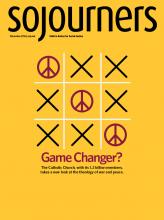WE HAVE SEEN some of their stories on the news and social media: Black girls, some as young as 5 and 6 years old, criminalized and harshly punished in school settings.
For example, Desre’e Watson, a Florida child, and Salecia Johnson in Georgia, both 6-year-old kindergarten students, both handcuffed and arrested by police for having emotional meltdowns—temper tantrums—at school. Or last year, the South Carolina teen flipped over in her desk and thrown across the room by a sheriff’s deputy for refusing to put away her cell phone or leave her algebra class, and, incredibly, Niya Kenny, the distraught classmate who recorded the incident on her phone and was arrested as well (though charges were later dropped).
When these and other outrageous examples of harsh punishment of school children come to public attention, they are seen as part of the school-to-prison pipeline that disproportionately pushes youth of color—especially African-American youth—out of school and toward the justice system. These problems often are seen as primarily affecting males, and initiatives to address them focus on improving outcomes for black boys. In her book Pushout: The Criminalization of Black Girls in Schools, Monique Morris makes the case that the specific experiences and treatment of black girls in schools and society are different from those of black boys and merit systematic attention and remedies tailored to create opportunities for black girls to thrive.
Pushout examines the intersection of black girls’ experiences as both girls and black youth. The book spotlights the persistent “one-dimensional stereotypes, images, and debilitating narratives” that threaten black girls’ survival and lead them to what Morris terms “school-to-confinement pathways.” Morris, president and cofounder of the National Black Women’s Justice Institute, stresses that she is not attempting to pit oppressed identities—black males and black females—against each other. Instead, she systematically unpacks the particulars of black girls’ experiences to explain why “individuals, communities, and all sorts of institutions have an obligation to understand why the pushout of black girls ... goes unchallenged.”
Read the Full Article

